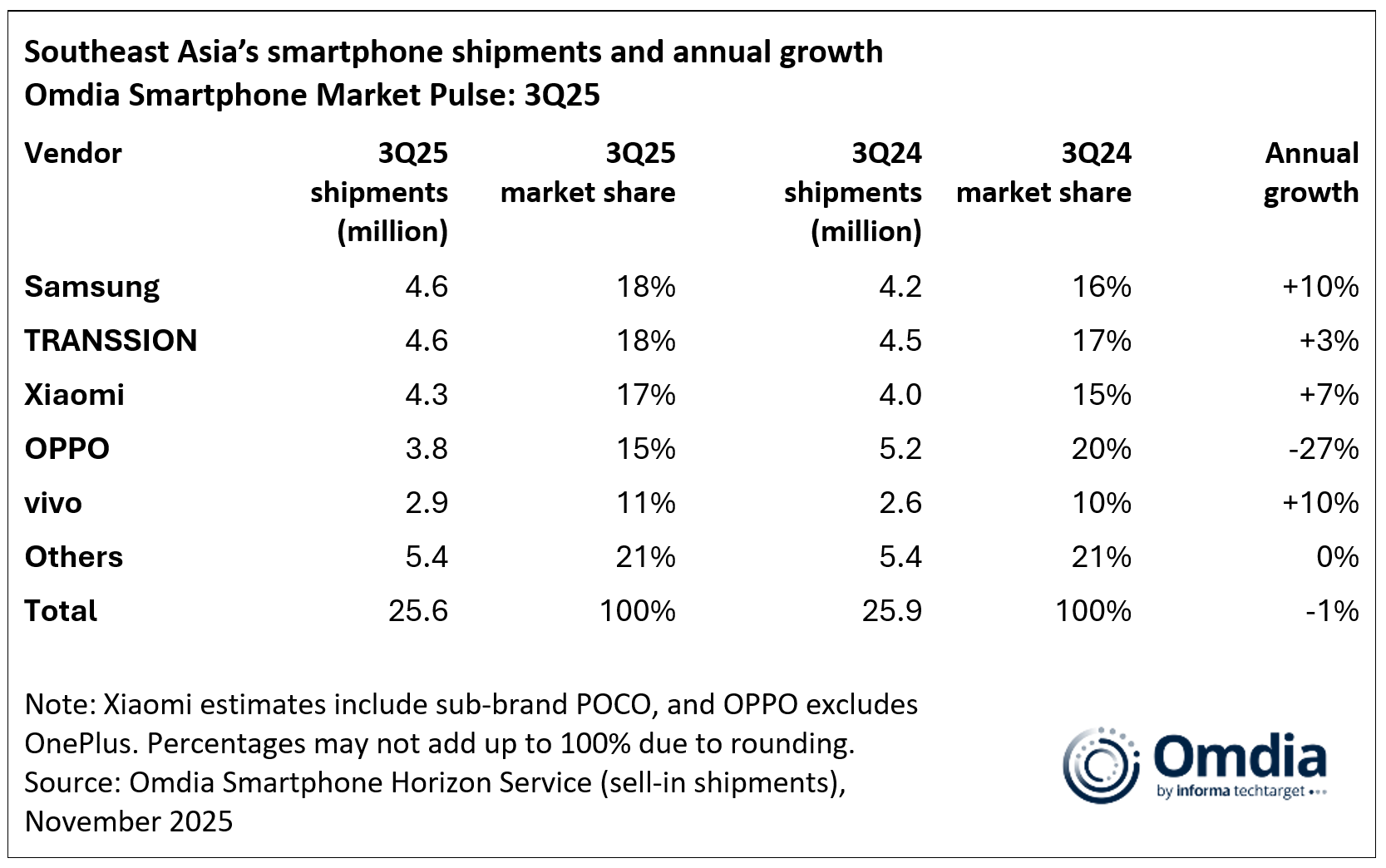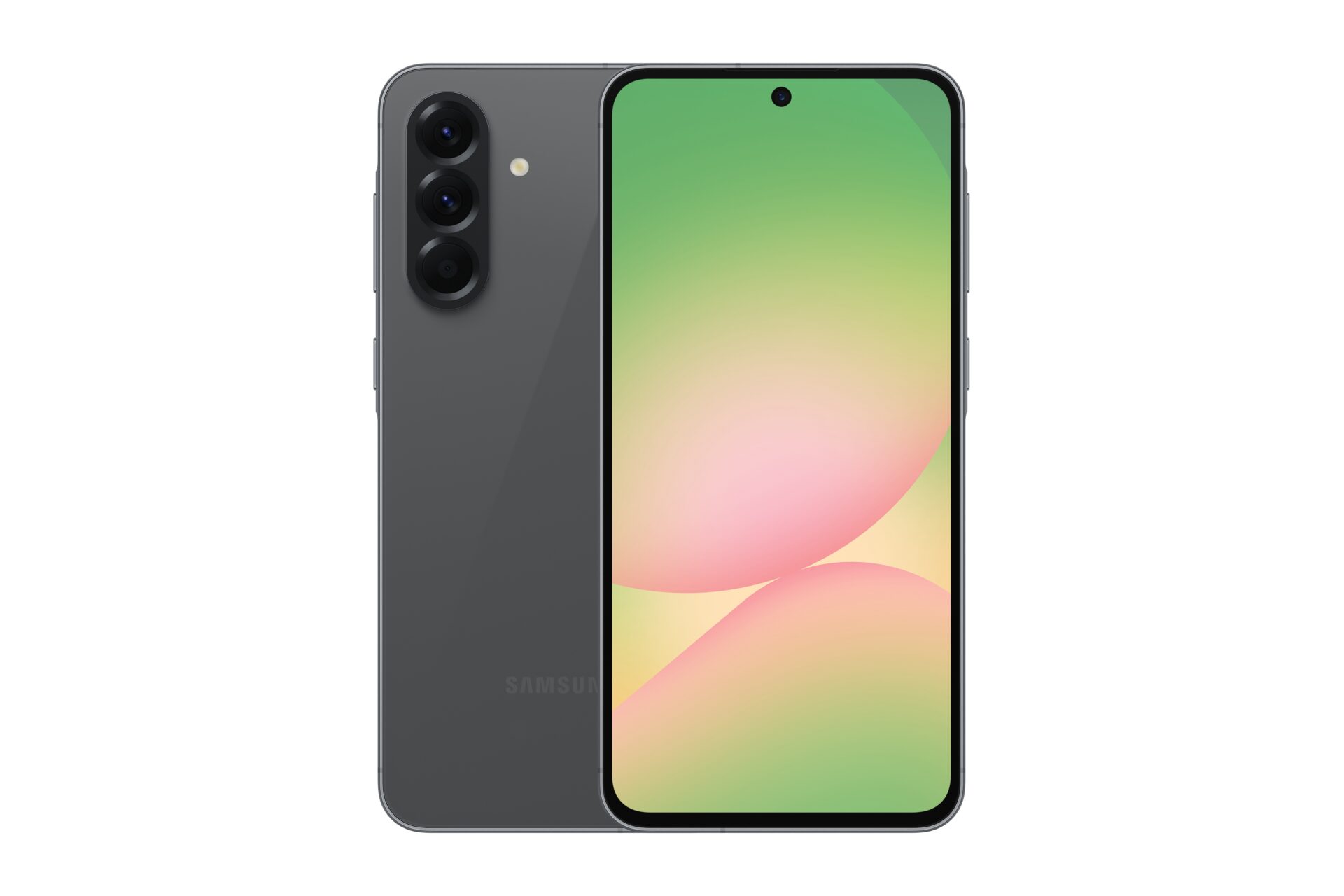
Smartphone shipments in Southeast Asia slipped 1 per cent year-on-year in the third quarter, as manufacturers incurred higher costs for memory and storage components, according to research firm Omdia.
Shipments for nine key markets, including Indonesia, Malaysia, Singapore and Thailand, totalled 25.6 million units, reflecting a third consecutive quarter of falling shipments, based on a study released today.
In a market that is diverse but often price-sensitive, Samsung continued to be the top phone maker with 18 per cent of phones shipped, thanks to markets such as Malaysia, Thailand and Vietnam that valued pricier models. However, like its rivals in the region, the Korean electronics giant is facing tough competition for consumers quick to switch brands.
Indeed, second-place Transsion, the Chinese manufacturer for phone brands such as Tecno and Infinix, also has about 18 per cent of the Southeast Asian market, thanks to more affordable models that are attractive in Indonesia and the Philippines.

The leaders are followed by other Chinese phone makers targeting the region aggressively. Xiaomi has 17 per cent (helped by its Poco low-cost range), while Oppo managed to grab 15 per cent and Vivo has 11 per cent, according to Omdia.
However, the falling shipments in the latest report also reflect how difficult it is to keep selling low-cost phones to win market share. In a region where 60 per cent smartphones shipped are priced below US$200, the rising cost of components is becoming a big barrier.
“Rising BoM [bill of materials] costs, driven largely by higher memory and storage prices, will place significant pressure on lower-priced devices,” said Le Xuan Chiew, a research manager at Omdia.
“To manage rising costs, vendors will need to balance competitive pricing with tough choices on whether to adjust prices, reduce hardware costs, or scale back marketing to protect margins,” he added.

Some brands such as Oppo and Vivo are now prioritising value over volume, though Honor and Xiaomi are focusing on driving volume to expand brand penetration, according to Omdia.
A notable example, it pointed out, is Honor’s X6c – the brand’s expanded channel coverage helped to more than double its quarterly shipments.
If you’re wondering where is Apple in all this, it is tops in Singapore, which has a relatively small market by units shipped. The iPhone maker has a commanding 43 per cent share, edging it past Samsung (32 per cent), and leaving the rest – Oppo (7 per cent), Xiaomi (6 per cent) and Honor (5 per cent) – far behind.




